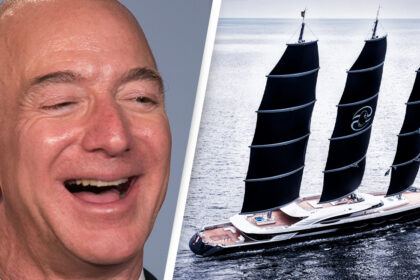Giving is a gift that comes from a good place. When the intentions are pure and the gift is a positive gift, we can do a lot of good in the world. The challenges however comes when something is given without intention or attention to detail. In the last few decades charities and non-profit organizations in the US have become more and more questionable.
Non-profits are increasingly found to be tax havens for the elite, for the very wealthy. There’s nothing wrong with saving money on taxes, and if you can do it, more power to you. However, when you’re presenting your non-profit as a charitable organization when it’s truly just a tax haven you will be found out.

I question any non-profit or charity and question the ‘do good’ actions of these massive organizations. It wasn’t that many years ago that the ‘think pink’ and ‘Susan G. Komen’ organizations were found to give a very very small percentage to actual cancer research while the majority of their funds (around 80% go to ‘administrative’ fees). This is the first red flag for non-profit and charitable organizations.
You can search ‘charity financial statements’ online and find the financial statements for that charity before you donate online. You’ll see what their costs are and how effective they are at actually delivering charity.
What a joke, that’s not a charity. That’s not a non-profit. It’s a tax haven and profit center for the elite. Another way to shelter their billions from the US Government. The people that do the most good seem to have been people that have been in those situations. The one’s that are in the soup kitchens actually serving the food, not the one’s with signs in their yards. I digress. Unfortunately there is a lot of talk and not a lot of action when it comes to true charitable actions.
Tom’s Shoes Started With Good Intentions But Wasn’t Thought Through
Tom’s shoes was founded by Blake Mycoskie. On a trip to Argentina his wife and him saw the original shoe design while traveling to Argentina. The story goes that Mycoskie wanted to help all the kid’s he saw without shoes, the shoe design from the country caught his eye. The shoe there is affordable and comfortable. They then came up with the ‘buy one give one’ model.
The company got publicity and grew very rapidly as this became their ‘hero product’ as Hollywood celebrities and even politicians got involved with the brand.

Left: Matthew McConaughey Middle: Blake Mycoskie (Founder of Toms Shoes) Left: Bill Clinton
People were willing to spend $48 to $78 per pair of these shoes. They were simple, lightweight and comfortable but companies quickly copied these shoe designs and soon there were other companies with the same shoes that were also donating shoes. Tom’s shoes was donating one pair of shoes per each pair bought, another brand ‘Bobs’ donated two pairs of shoes for every pair bought.
The production of shoes increased massively and this became very wasteful. When shoes are produced faster and faster at a larger rate it creates more waste and fashion is one of the largest environmental polluters on the planet. Beyond that, there are other problems and challenges that were created.
The one big key problem that Tom’s shoes created was that by doing the ‘buy one give one’ model with it’s shoes it created a LARGE amount of shoes being donated. They would donate these to countries that didn’t have as much wealth, which seems good on the surface. In the case of the Dominican Republic for example so many pairs of Tom’s shoes were donated there that ALL shoe retailers went out of business in the Dominican Republic. It is said that other countries suffered similar affects.
In other words, all of those shoes that were donated were handouts that were ‘giving a man fish’ as opposed to ‘teaching a man to fish’ and this disrupted the entire shoe economy in the Dominican Republic. The challenge here is that it is hurting this smaller economy and keeping them down. Similar to Government programs in the states that enable people to stay impoverished, Tom’s shoes has done the same thing overseas.
It is better understand the core problem of poverty in developing countries as opposed to through material goods their way. That does not solve the problem or plant new seeds, roots and trees. The problem of poverty is far deeper than just children lacking a pair of shoes. It’s that they lack opportunity, work, jobs. It is important to know the systemic reasons for poverty in a given country.
It would be far better to create a solution, not a band-aid that falls off. Developing countries do not need paternalism. The more dependent people are on your handouts the more dependent they become overall.
What Tom’s shoes and other brands like this could do is to simply create jobs and employment opportunities within this region of the world. Truly Free, an eco-laundry and home goods cleaning company that I get products from does this by hiring women in a deaf house in Jamaica. The women are not regularly exposed to opportunities let alone consistent employment. A product called ‘dryer angels’ is made by these women and they are employed, and the money we spend on these products actually goes to them doing meaningful work and getting paid for it. You can learn more about Truly Free by clicking here.
That’s the new way to do business in a charitable way. Don’t extend handouts, extend opportunities.
Recommended Reading: Turns Out Your Shoes Can Harm Your Posture – Here’s What You Need To Know





